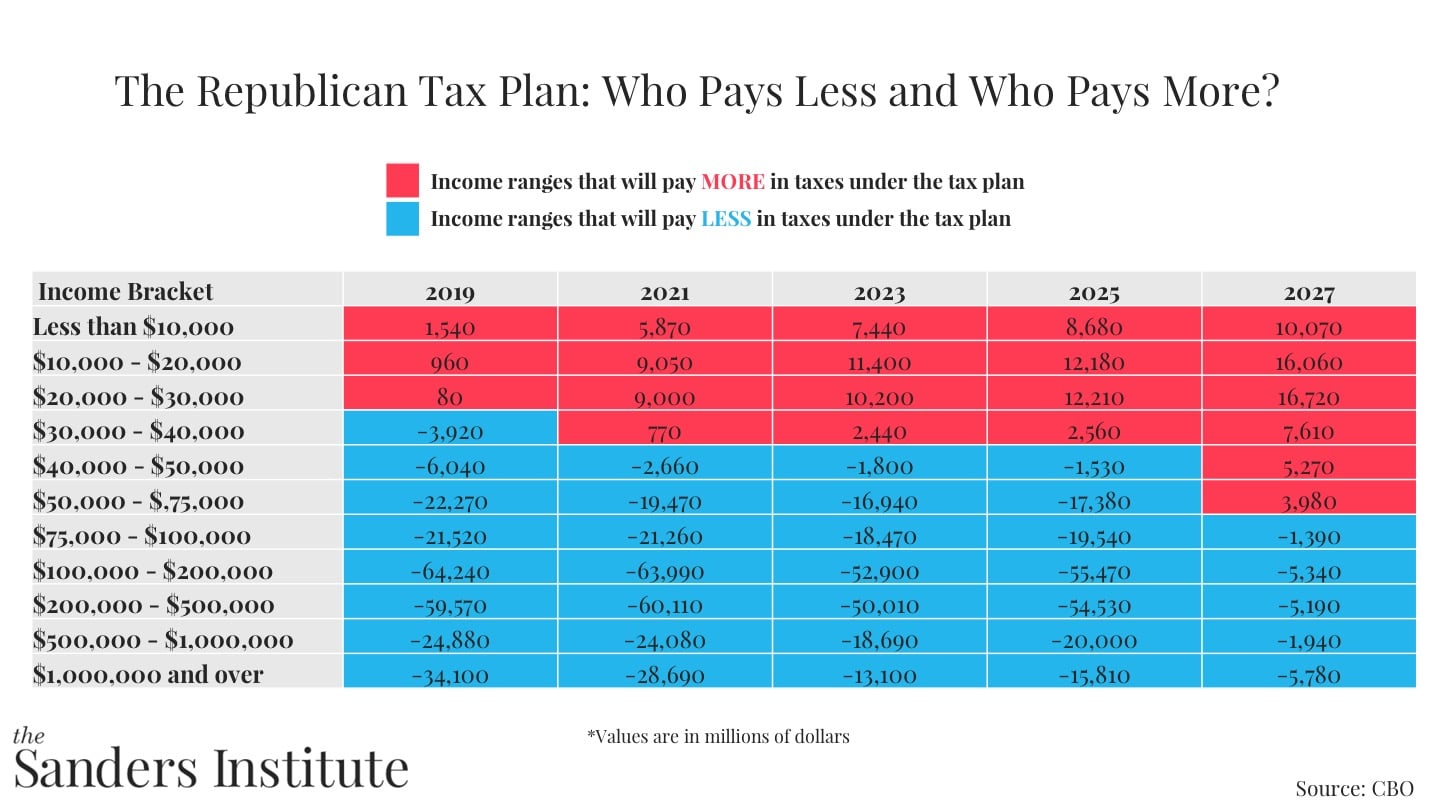With any piece of legislation, it is important to understand the reasons that people give for why it should be implemented, why it should not be implemented, and the data behind those reasons. The GOP tax plan is the largest overhaul in U.S. history. As we read about this piece of legislation, many of us exist in echo chambers where we can only read and see one viewpoint.
In this article, we expose you to varying viewpoints on the tax plan
A REPUBLICAN STATEMENT SUPPORTING THE TAX PLAN
On December 6th, Senator Mitch McConnell put out a press release entitled “One Step Closer to Tax Reform.” In this press release he indicates his support for the bill, the process, and his colleagues.
Specifically, he argues that the bill is much needed, and wanted, reform: ” Senators answered the calls of our constituents by voting to overhaul our complex and outdated federal tax code. We seized the opportunity to spur economic growth, to help create jobs right here at home, and to take more money out of Washington’s pocket and put more money into the pockets of hardworking American families”
He also points positively to portions of the bill that repeal the individual mandate and expands drilling opportunities in Alaska: ““Our bill also helps provide for our country’s energy security by further developing Alaska’s oil and gas potential in an environmentally responsible way. And it delivers relief to low- and middle-income Americans by repealing Obamacare’s individual mandate tax.”
A REPUBLICAN STATEMENT OPPOSING THE TAX PLAN
The Senate vote on the tax plan was almost completely on party line. However, there was one Republican Senator who voted against the tax plan.
In his press release from December first, Senator Corker states that he was not able to vote for the plan due to the large increase to the federal deficit within the plan.
“My concern about the impact a rapidly growing $20 trillion national debt will have on our children and grandchildren has been a guiding principle throughout my time in public service… From the beginning of this debate, I have been a cheerleader for legislation that – while allowing for current policy assumptions and reasonable dynamic scoring – would not add to the deficit and set rates that are permanent in nature.”
He argues that “pro-growth policies” are not mutually exclusive from deficit neutral policies and says that he believes ” it would have been fairly easy to alter the bill in a way that would have been more fiscally sound without harming the pro-growth policies.”
The decision to vote agains the tax plan was clearly a difficult one for him. However, his commitment to reducing the debt was the stronger influence on Senator Corker.
A DEMOCRATIC STATEMENT OPPOSING THE TAX PLAN
The House was the first chamber of Congress to pass their version of the GOP tax plan on November 16th. Before it was passed, Representative Raúl Grijalva put out a press release outlining his opposition to the bill.
He states that he opposes it due to the fact that the economic theory upon which the plan is based has never worked: “The details of the Trump-Ryan tax plan reveal the same-old tried-and failed formula of trickle-down economics that does nothing to help America’s working families…History shows that massive corporate tax cuts do nothing to spur job growth and in many cases corporations who have reaped those benefits end up cutting American jobs.”
The redistribution of wealth, and ultimate outsourcing of jobs in the bill was also a point of contention for Senator Grijalva: “In ten-year’s time, 80% of the Republican’s tax breaks will exclusively benefit the top 1% of those making close to a million dollars, while one in four Americans will see a tax increase. This tax plan is a complete scam that does little to help working families.” and “Their territorial international plan is the ultimate job outsourcer by ending or dramatically lowering taxes on foreign profits and cementing the practice of offshoring American jobs.”
Senator Grijalva warns that this bill (and particularly the increase to the deficit) “provides Republicans with the ammunition they are after to force trillions of dollars in cuts from Social Security, Medicaid, education and other essential programs.”
AN INDEPENDENT STATEMENT OPPOSING THE TAX PLAN
On December 2nd, Independent Senator Angus King also put forward a press release opposing the GOP tax bill after its passage.
He first criticizes the way in which the bill was passed: “I’m disappointed, and I’m angry, because the American people deserve better. For months, moderates in the Senate reached across the aisle to colleagues – and friends – asking them to sit down and work together on a commonsense tax reform bill that supports hardworking Americans and fosters economic growth for businesses in Maine and across the country. In other words: to govern.”
Next, he argues that this bill does not do help hardworking Americans, instead, it raises the deficit and places the burden on American children: “This Senate has decided to pass a bill that helps the few instead of the many, and shifts a massive financial burden onto our children. Rather than maximize this opportunity to help working Americans and set our nation on a path to further prosperity, this bill pushes through at least $1 trillion in unfunded tax cuts for the wealthy and for corporations.”





